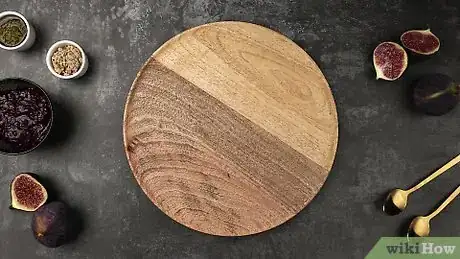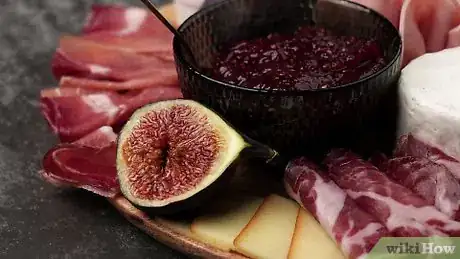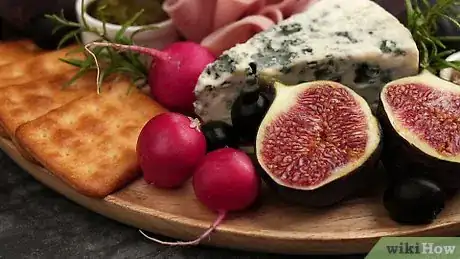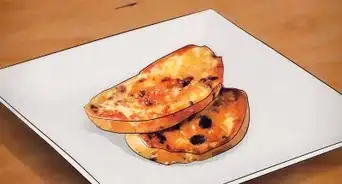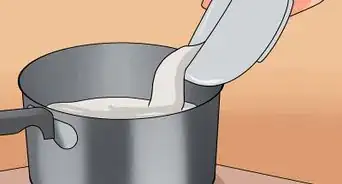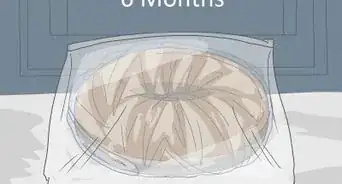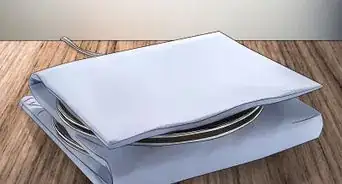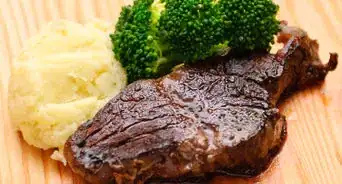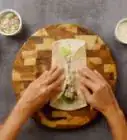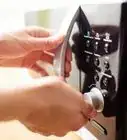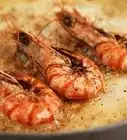This article was co-authored by Christopher Lucchese and by wikiHow staff writer, Hannah Madden. Christopher Lucchese is a Certified Sommelier affiliated with Home Somm, a Los Angeles, California-based business that does private wine tastings, education and paired wine dinners. Christopher was also a Sommelier for Michael Mina's Bourbon Steak, a Michelin-rated restaurant for three years. He is a Level 4 Diploma Student with the WSET (Wine & Spirit Education Trust). He is also a Certified Sommelier by the Court of Master Sommeliers and has trained with the Wine Scholar Guild and The Culinary Institute of America. He took two semesters at UC Davis for winemaking, viticulture and enology.
There are 9 references cited in this article, which can be found at the bottom of the page.
This article has been viewed 17,775 times.
If you’ve scrolled social media lately, you’ve probably seen impressive, picture-perfect cheese boards at some point. Beautiful, delicious-looking charcuterie boards have taken over the internet, and for good reason—they’re the perfect things to serve at parties or large events. Making your own Pinterest-worthy charcuterie board might sound intimidating, but it’s actually much easier than it looks! Keep reading to learn how you can wow your guests with a beautiful, mouth-watering board full of cheese, meat, and other decadent snacks.
Steps
References
- ↑ https://www.thekitchn.com/halloween-charcuterie-boards-23098790
- ↑ https://www.epicurious.com/expert-advice/everything-you-need-to-make-an-instagram-worthy-cheeseboard-article
- ↑ Christopher Lucchese. Certified Sommelier. Expert Interview. 11 March 2020.
- ↑ https://www.thekitchn.com/how-to-build-the-perfect-french-cheese-board-23076890
- ↑ https://www.epicurious.com/expert-advice/everything-you-need-to-make-an-instagram-worthy-cheeseboard-article
- ↑ https://www.epicurious.com/expert-advice/everything-you-need-to-make-an-instagram-worthy-cheeseboard-article
- ↑ https://www.foodnetwork.com/shows/the-kitchen/articles/make-your-own-charcuterie-board-with-this-checklist
- ↑ https://www.foodnetwork.com/fn-dish/recipes/how-to-build-a-giant-cheese-and-charcuterie-board
- ↑ https://www.cooksillustrated.com/articles/390-how-to-make-the-ultimate-cheese-board
- ↑ https://www.thekitchn.com/a-modern-relish-tray-for-thanksgiving-gatherings-from-the-kitchn-213093
- ↑ https://www.foodnetwork.com/shows/the-kitchen/articles/make-your-own-charcuterie-board-with-this-checklist
- ↑ https://www.epicurious.com/expert-advice/everything-you-need-to-make-an-instagram-worthy-cheeseboard-article
- ↑ https://www.epicurious.com/expert-advice/how-to-build-a-charcuterie-board-like-a-pro-article
- ↑ https://www.foodnetwork.com/fn-dish/recipes/how-to-build-a-giant-cheese-and-charcuterie-board
- ↑ https://www.foodnetwork.com/fn-dish/recipes/how-to-build-a-giant-cheese-and-charcuterie-board
- ↑ https://www.foodnetwork.com/fn-dish/recipes/how-to-build-a-giant-cheese-and-charcuterie-board
- ↑ https://www.foodnetwork.com/fn-dish/recipes/how-to-build-a-giant-cheese-and-charcuterie-board
- ↑ https://www.epicurious.com/expert-advice/everything-you-need-to-make-an-instagram-worthy-cheeseboard-article

